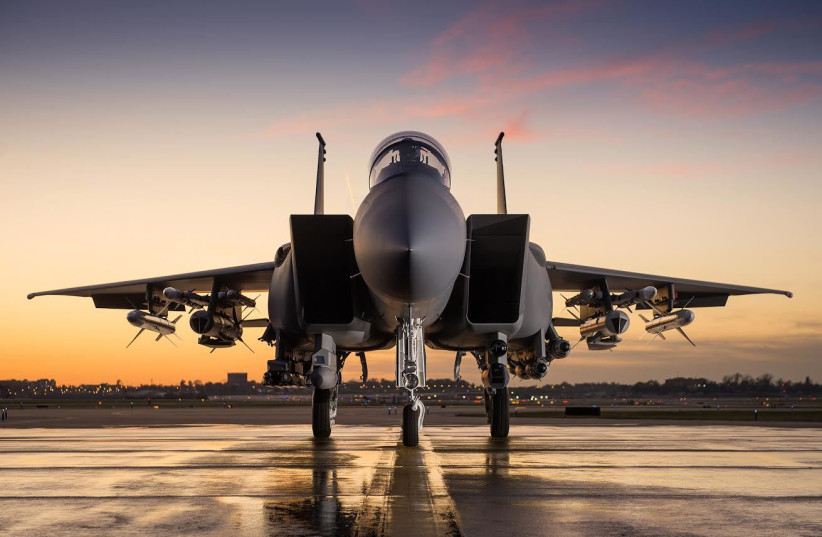The UK, Japan and Italy say they will team up to build “a sixth-generation fighter jet.” This is important and it appears to be one of the many responses of advanced democracies in confronting a world order where China and Russia are challenging democracies.
The war in Ukraine has prodded many countries to make plans for new weapons and platforms. This means new investment in air defenses, drones and warplanes. It also means that countries will increase stockpiles of munitions.
Israel is one of the advanced economies that is a key partner of many countries in Europe and the West. Israel’s three large defense companies also sell to customers in Asia. The Abraham Accords and partnerships with the US and India are all important in this regard. Japan, Italy and the UK are all friends of Israel and seeing them move into the realm of co-designing a sixth-generation warplane, which may be operational by 2035, is important.
It is clear that the reference to a sixth-generation plane looks to contrast or even challenge America’s dominating F-35. The countries that want to work on the new fighter jet are all part of the F-35 program. The UK decided to purchase it back in 2012, the first Italian-assembled one flew in 2015 and Japan rolled out a domestically built one in 2017.
So why are these countries investing in another jet? A report from CNN said that the jet is “designed to rival or eclipse the best warplanes now employed by the likes of China and Russia – and possibly even the United States, the main ally of the trio.” The endeavor is called the Global Combat Air Program (GCAP). The countries want their partnership to defend democracies and also confront “threats and aggression” that may harm the “rules-based, free and open international order.”

The new jet would replace the Eurofighter Typhoon, which has been flying since the 1990s and in service since the early 2000s. Replacing the Typhoon is a priority for other European countries as well. Germany, France and Spain are working on a concept called the New Generation Fighter (NGF).
The project the UK, Italy and Japan are working on is called the Tempest jet. According to reports, it will carry the latest weapons and have artificial intelligence built in. The UK currently operates the Typhoon and F-35, of which it has roughly 180 total jets, including the carrier-based F-35s. The Italians operate the Tornado, Typhoon and F-35s, as well as the ground attack AMX. Italy also has around 170 of these aircraft combined. Japan uses F-15s, Mitsubishi F-2s and F-35s, of which it has more than 200 in total.
"Tempest Jet"
BUILDING, TESTING and operating a new sixth-generation fighter jet will be important for all these countries and will complement the F-35s that they are already flying. The announcement of the new jet also comes as Japan is acquiring new KC-46A refuelers, and after the US announced the new B-21 Raider, a nuclear-capable optionally-manned stealth bomber.
The message is clear: All of these advances in planes and weapons systems are putting the world’s advanced democracies on a path to continue to dominate the air, and by doing so, to also be able to project power and dominate naval and land operations.
Of course, the problem with military procurement is that in the West, these programs often take billions of dollars of investment and take a long time to see actual operational aircraft roll off the line. Sometimes these programs will take a decade or more and see cost overruns and problems with the aircraft once they are actually produced.
The US Army, for instance, has just decided to purchase new V-280 helicopters to replace the Black Hawks. It is also looking to decide on a new Future Attack Reconnaissance Aircraft (FARA). Defense News notes that “the Army awarded two contracts to build prototypes for a competitive fly-off for the FARA program in 2020. Bell is building the 360 Invictus, while Lockheed Martin’s Sikorsky is offering up the Raider X, also a coaxial helicopter.” The US will need to make a decision on this helicopter soon as well.
Taken together, the context is clear. New helicopters, new stealth bombers, new sixth-generation aircraft, and new types of unmanned vessels and unmanned aircraft are all being proposed and will dominate the skies and seas by the 2030s. This includes the possibility of what is called “manned-unmanned teaming” where fighter jets have a “loyal wingman” drone that flies with them, something the Australians are looking into. In addition, Australia has a new submarine deal in the works as part of an Australia-UK-US partnership called AUKUS.
This has broader implications in the Middle East
This has broader implications in the Middle East. With a major visit by China this week to Saudi Arabia, the West is concerned. The US has key bases in Bahrain, the UAE and Qatar. The Emirates was considering the F-35, but in 2021 chose to buy 80 French Rafale jets. Indonesia also passed up the Su-35, from Russia, in favor of the Rafale, a report said last year.
Middle Eastern countries, some of them oriented toward the US and some oriented toward Russia, will have to make major defense decisions soon. Turkey is trying to make a lot of defense systems locally but it still wants US F-16s. Russia and Iran have new unprecedented military partnerships and Iran is providing Russia with drones. The Gulf states are acquiring new air defenses, such as the US Patriot and THAAD, and there are also new ties with Israel that will have ramifications.
All of this matters and is interlinked with the decision of the UK, Italy and Japan to move forward with a new fighter jet.
